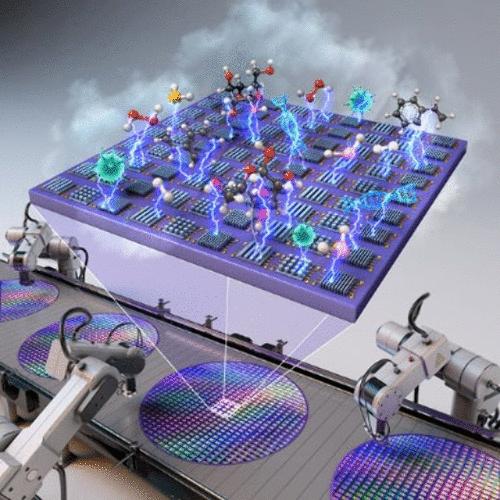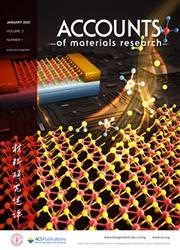Top-Down Fabrication of Chemical and Biological Sensors
IF 14
Q1 CHEMISTRY, MULTIDISCIPLINARY
引用次数: 0
Abstract
Fabrication of complex three-dimensional (3D) structures with micro/nanoscale dimensions is crucial for high-performing chemical and biological sensor applications. It not only enables the accurate detection and tracking of minuscule chemical and biological analytes but also determines the commercial viability and practical utilization of the sensors in future intricate applications. Among various structure fabrication approaches, top-down lithography provides invaluable tools for fabricating complex 3D micro/nanoscale structures in sensors, enabling the sensitive and selective detection of low concentration chemical and biological analytes. Moreover, it preserves the inherent advantages of top-down lithography as the sensor attributes, including (i) high-resolution and tight pitch 3D structures in long-range order, (ii) varied pattern shapes, dimensions, and densities, (iii) low device-to-device variation, (iv) high integrated circuit yield, (v) acceptable process cost and processability, and (vi) the ability to accommodate a wide range of materials. Given the variety of top-down lithographic methods available for fabricating sensors and the complex requirements of the sensor such as diverse target analytes, varying concentration levels, and different sensing environments, it is essential to have a comprehensive understanding of the technical nuances associated with each top-down lithography technique and its applications. However, there is a significant gap in the literature regarding targeted evaluations of top-down lithography methods for high-performance chemical and biological sensor fabrication as well as a clear articulation of sensor design rules.

自上而下制造化学和生物传感器
制造具有微米/纳米级尺寸的复杂三维(3D)结构对于高性能化学和生物传感器的应用至关重要。它不仅能准确检测和跟踪微小的化学和生物分析物,还决定了传感器在未来复杂应用中的商业可行性和实际应用。在各种结构制造方法中,自上而下光刻技术为制造传感器中复杂的三维微米/纳米级结构提供了宝贵的工具,可实现对低浓度化学和生物分析物的灵敏和选择性检测。此外,它还保留了自上而下光刻技术作为传感器属性的固有优势,包括:(i) 高分辨率、长距离紧密间距的三维结构;(ii) 不同的图案形状、尺寸和密度;(iii) 低器件间差异;(iv) 高集成电路良率;(v) 可接受的工艺成本和可加工性;(vi) 适应多种材料的能力。鉴于用于制造传感器的自上而下光刻方法种类繁多,而传感器的要求又十分复杂,如目标分析物种类繁多、浓度水平各异、传感环境不同等,因此全面了解与每种自上而下光刻技术及其应用相关的技术细节至关重要。然而,在对用于高性能化学和生物传感器制造的自上而下光刻方法进行有针对性的评估以及对传感器设计规则进行清晰阐述方面,还存在很大的文献空白。
本文章由计算机程序翻译,如有差异,请以英文原文为准。
求助全文
约1分钟内获得全文
求助全文

 求助内容:
求助内容: 应助结果提醒方式:
应助结果提醒方式:


